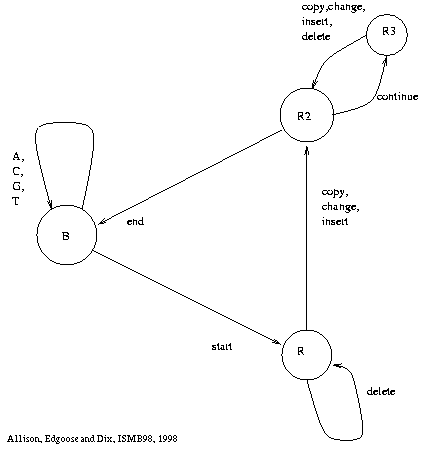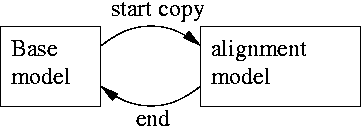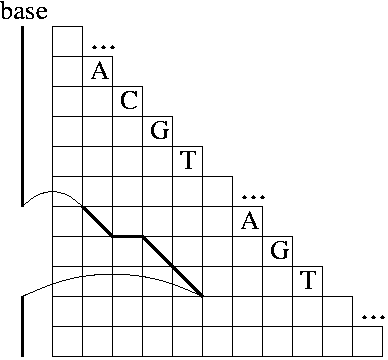



| BioC | GenC | DNAC | DNAP | CDNA | ARM | XM | |
|---|---|---|---|---|---|---|---|
| HUMHBB | 1.88 | 1.82 | 1.79 | 1.78 | 1.77 | 1.73 | 1.75 |
| CP | ProtComp | LZ-CTW | XM | |
|---|---|---|---|---|
|
SC,
Sacharomyces Cerevisiae |
4.15 | 3.94 | 3.95 | 3.89 |
| Sequence | CHMPXX | CHNTXX | HEHCMVCG | HUMDYSTR | HUMGHCSA | HUMHBB | HUMHDAB | HUMHPRTB | MPOMTCG | MTPACG | VACCG | Average |
| Length | 121024 | 155844 | 229354 | 33770 | 66495 | 73308 | 58864 | 56737 | 186609 | 100314 | 191737 | - |
| gzip | 2.2818 | 2.3345 | 2.3275 | 2.3618 | 2.0648 | 2.2450 | 2.2389 | 2.2662 | 2.3288 | 2.2919 | 2.2518 | 2.2721 |
| bzip | 2.1218 | 2.1845 | 2.1685 | 2.1802 | 1.7289 | 2.1481 | 2.0678 | 2.0944 | 2.1701 | 2.1225 | 2.0949 | 2.0983 |
| ac-o2 | 1.8364 | 1.9333 | 1.9647 | 1.9235 | 1.9377 | 1.9176 | 1.9422 | 1.9283 | 1.9654 | 1.8723 | 1.9040 | 1.9205 |
| ac-o3 | 1.8425 | 1.9399 | 1.9619 | 1.9446 | 1.9416 | 1.9305 | 1.9466 | 1.9352 | 1.9689 | 1.8761 | 1.9064 | 1.9267 |
| gzip-4 | 1.8635 | 1.9519 | 1.9817 | 1.9473 | 1.7372 | 1.8963 | 1.9141 | 1.9207 | 1.9727 | 1.8827 | 1.8741 | 1.9038 |
| bzip-4 | 1.9667 | 2.0090 | 2.0091 | 2.0678 | 1.8697 | 1.9957 | 1.9921 | 2.0045 | 2.0117 | 1.9847 | 1.9520 | 1.9875 | dna2(MR04) | 1.6733 | 1.6162 | 1.8487 | 1.9326 | 1.3668 | 1.8677 | 1.9036 | 1.9104 | 1.9275 | 1.8696 | 1.7634 | 1.7891 |
| Off-line(AL00) | 1.9022 | 1.9985 | 2.0157 | 2.0682 | 1.5993 | 1.9697 | 1.9740 | 1.9836 | 1.9867 | 1.9155 | 1.9075 | 1.9383 |
| BioCompress(GT94) | 1.6848 | 1.6172 | 1.848 | 1.9262 | 1.3074 | 1.88 | 1.877 | 1.9066 | 1.9378 | 1.8752 | 1.7614 | 1.7837 |
| GenCompress(CKL00) | 1.673 | 1.6146 | 1.847 | 1.9231 | 1.0969 | 1.8204 | 1.8192 | 1.8466 | 1.9058 | 1.8624 | 1.7614 | 1.7428 |
| CTW+LZ(MSI00) | 1.6690 | 1.6129 | 1.8414 | 1.9175 | 1.0972 | 1.8082 | 1.8218 | 1.8433 | 1.9000 | 1.8555 | 1.7616 | 1.7389 |
| DNACompress(CLM02) | 1.6716 | 1.6127 | 1.8492 | 1.9116 | 1.0272 | 1.7897 | 1.7951 | 1.8165 | 1.8920 | 1.8556 | 1.7580 | 1.7254 |
| DnaPack(BF05) | 1.6602 | 1.6103 | 1.8346 | 1.9088 | 1.0390 | 1.7771 | 1.7394 | 1.7886 | 1.8932 | 1.8535 | 1.7583 | 1.7148 |
| CDNA(LY99) | - | 1.65 | - | 1.93 | 0.95 | 1.77 | 1.67 | 1.72 | 1.87 | 1.85 | 1.81 | - |
| GeMNL(KT05) | 1.6617 | 1.6101 | 1.8420 | 1.9085 | 1.0089 | - | 1.7059 | 1.7639 | 1.8822 | 1.8440 | 1.7644 | - |
| eXpert Model(CDA07) | 1.6575 | 1.6086 | 1.8404 | 1.9031 | 0.9845 | 1.7524 | 1.6696 | 1.7378 | 1.8783 | 1.8466 | 1.7639 | 1.6946 |
| Sequence | Haemophilus Influenzae | Saccharomyces Cerevisiae | Methanococcus Jannaschii | Homo Sapiens | Average |
| CP(MW99) | 4.143 | 4.146 | 4.051 | 4.112 | 4.113 |
| ProtComp(HT04) | 4.108 | 3.938 | 4.008 | 3.824 | 3.9695 |
| LZ+CTW(MSI00) | 4.1177 | 3.9514 | 4.0279 | 4.0055 | 4.0256 |
| eXpert Model(CDA07) | 4.1022 | 3.8859 | 4.0002 | 3.7860 | 3.9434 |




